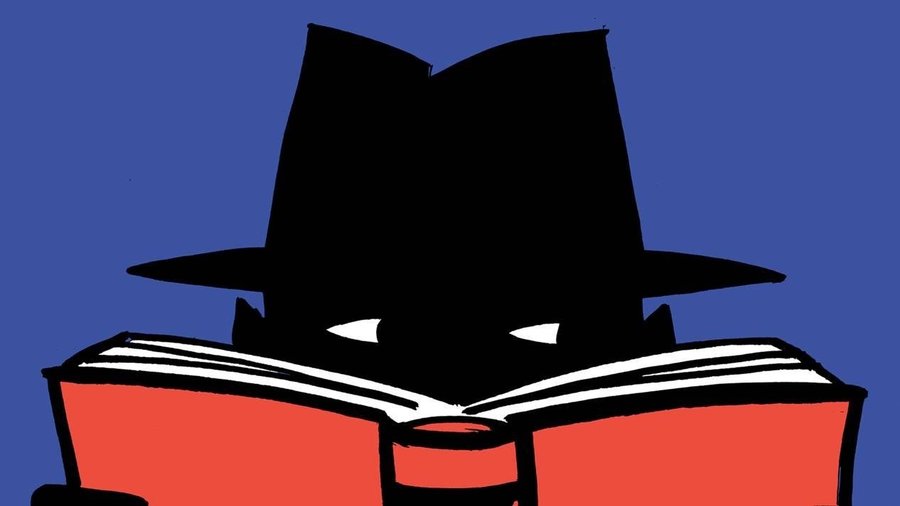Mystery reading makes us smarter.
It does, really. According to experts, mystery readers must assemble data, evaluate facts, and draw logical conclusions, which, willy-nilly, enhances critical and analytical thinking skills. And we get such intellectual bennies painlessly, by simply indulging in Tintin, Agatha Christie, Sherlock Holmes, Encyclopedia Brown, and Nancy Drew.
And there are, of course, hundreds of books and resources…
Table of Contents
GETTING STARTED
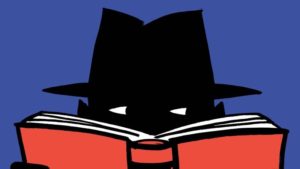 |
Both the British Crime Writers’ Association and the Mystery Writers of America have published lists of the 100 best mysteries of all time. (How many have you read?) See both lists here. |
| From Commonsense Media, check out these kid’s mystery book reviews. | |
| First Clues is a spectacular source of mystery series books for kids and young adults, categorized by age: New Sleuths (4-6), Future Sleuths (7-9), Sleuths in Training (10-12), and Apprentice Sleuths (13 and up). | |
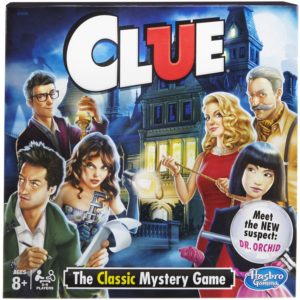
|
Professor Plum with the candlestick in the library? In this classic board game of deductive reasoning (and mystery-solving), Clue players must determine who killed the owner of the mansion, and where and with what. For 3-6 would-be detectives, ages 8 and up. |
THE INCOMPARABLE SHERLOCK HOLMES
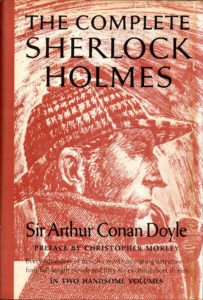
|
The most famous of fictional detectives is certainly the infallible Sherlock Holmes, noted for deductive reasoning, violin-playing, an opium habit, and his long-suffering sidekick, Dr. Watson. Sir Arthur Conan Doyle’s Holmes opus consists of four novels (A Study in Scarlet, The Sign of the Four, The Hound of the Baskervilles, and The Valley of Fear) and 56 short stories, available in many print editions. The complete texts are also available online at www.sherlockian.net, a large and multifaceted web site with a wealth of information on all things Holmes, Watson, and Doyle. |
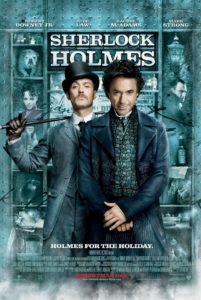 |
Those looking for Sherlock Holmes on video have a wide choice of interpretations and actors, among these last everyone from Basil Rathbone to Jeremy Brett to Benedict Cumberbatch. For a brief history of Sherlock Holmes movies, see the Atlantic’s Film’s 111-Year Obsession With Sherlock Holmes which includes a video of the 30-second 1900 silent film “Sherlock Holmes Baffled” (possibly the first mystery movie ever) and a great slide show of Holmesian movie scenes. |
| For an annotated list of Sherlock Holmes films and TV series, see the Internet Movie Database. | |
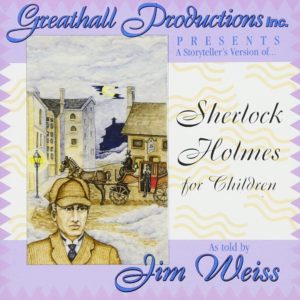
|
Jim Weiss’s Sherlock Holmes for Children is a superb audio version of four Holmes tales: “The Mazarin Stone,” “The Adventure of the Speckled Band,” “The Musgrave Ritual,” and “The Adventure of the Blue Carbuncle.” All are told in kid-friendly language while retaining the flavor of the original texts. |
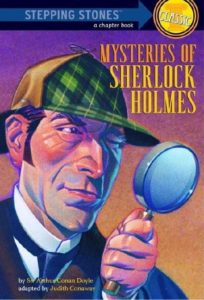
|
Adapted by Judith Conaway, the 96-page Mysteries of Sherlock Holmes (Random House Books for Young Readers, 1984) is a large-print collection of three Holmes stories – “The Speckled Band,” “The Red-Headed League,” and “The Blue Carbuncle” – retold in simple language for ages 6-9. |
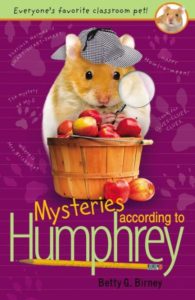
|
In Betty G. Birney’s Mysteries According to Humphrey (Putnam Juvenile Books, 2012) – seventh in a series of chapter books starring the lovable (and “SMART-SMART-SMART”) classroom hamster, Humphrey – teacher Mrs. Brisbane has just read “The Adventure of the Red-Headed League” to her class. Humphrey, inspired, uses Sherlock Holmes’s methods to solve cases of his own. For ages 7-10. |
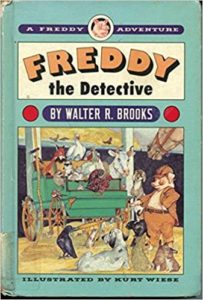
|
Walter R. Brooks’s 26 Freddy the Pig books, originally written in the 1930’s and 40’s, all feature Freddy, a versatile, poetic, and hilarious pig, and his animal friends on the Bean farm. In Freddy the Detective (Overlook Juvenile Books, 2010), Freddy discovers Sherlock Holmes and promptly sets out to emulate his new hero, solving assorted mysteries involving a stolen toy train, a criminal gang of rats, a missing bunny named Egbert, and a false charge of murder. For ages 7-11. |
| Freddy the Pig’s Home Page has synopses of all the Freddy books, more information on Freddy and the Bean farm, illustrations, and a biography of Walter R. Brooks. Visit the site and become an official Friend of Freddy. | |
| For more resources, see Perfect Pigs. | |
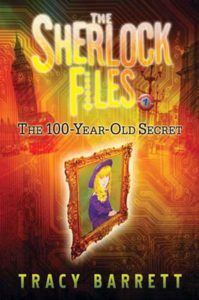
|
Tracy Barrett’s Sherlock Files Series stars twelve-year-old Xena and Xander Holmes, descendants of the famous detective. In The 100-Year-Old Secret (Square Fish, 2010), first of the series, Xena and Xander move to London and find that they have inherited Sherlock Holmes’s casebook of unsolved mysteries. They decide to crack the cases themselves. Subsequent titles are The Beast of Blackslope, The Case That Time Forgot, and The Missing Heir. For ages 8-12. |
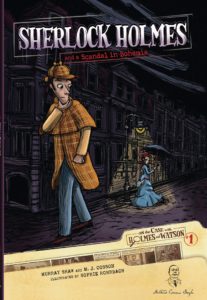
|
Adapted by Murray Shaw and M.J. Cosson, the On the Case with Holmes and Watson Series (Graphic Universe) is a nicely illustrated graphic-novel collection of Holmes (and Holmes-derived) stories, among them Sherlock Holmes and a Scandal in Bohemia, Sherlock Holmes and the Adventure at Abbey Grange, and Sherlock Holmes and the Adventure of the Sussex Vampire. For ages 9 and up. |
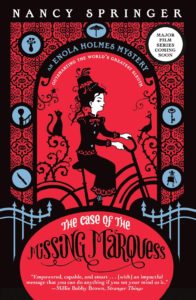
|
Nancy Springer’s The Case of the Missing Marquess (Puffin, 2007) features Enola Holmes, Sherlock’s unconventional 14-year-old sister, who shares her brother’s talent for deductive reasoning and crime-solving. This is the first of many Enola mysteries, among them The Case of the Left-Handed Lady, The Case of the Gypsy Goodbye, The Case of the Peculiar Pink Fan, and The Case of the Cryptic Crinoline. For ages 9-14. |
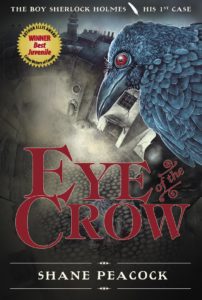
|
In Shane Peacock’s award-winning The Boy Sherlock Holmes Series, Sherlock is thirteen, son of an aristocratic mother and a poor Jewish father, bullied and unhappy at school. He’s also brilliant and is already using his impressive analytical talents to solve crimes. Titles in the series are Eye of the Crow, Death in the Air, Vanishing Girl, The Secret Fiend, The Dragon Turn, and Becoming Holmes. For ages 10 and up. |
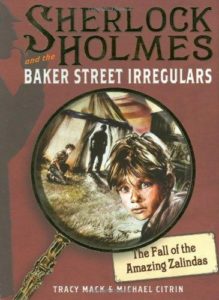
|
By Tracy Mack and Michael Citrin, The Fall of the Amazing Zalindas (Orchard Books, 2009) is the first of the Sherlock Holmes and the Baker Street Irregulars Series, featuring Holmes, Watson, and a gang of homeless urchins who prove invaluable for their help in solving crimes. In this volume, three circus tightrope walkers have fallen to their deaths, and the crime leads to the Prince of Wales and a stolen 17th-century book. A helpful appendix of “Facts and Practicals for the Aspiring Detective” provides historical background information. There are several sequels. For ages 10 and up. |
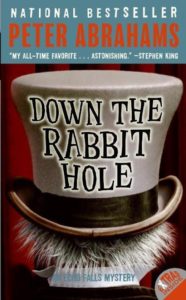
|
In Peter Abrahams’s Down the Rabbit Hole (HarperCollins, 2006), set in the town of Echo Falls, 13-year-old Ingrid Levin-Hill – a devoted fan of Sherlock Holmes – finds herself embroiled in a murder mystery, a community theater production of Alice in Wonderland, and a friendship with Joey Strade, the police chief’s son. Other Echo Falls mysteries, also featuring investigative Ingrid, Joey, and the Prescott Players, are Into the Dark and Behind the Curtain. For ages 10 and up. |
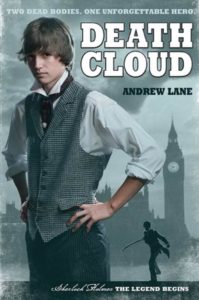
|
In Andrew Lane’s Death Cloud (Farrar, Straux & Giroux, 2011), Sherlock is fourteen, and has been sent to spend the summer with an eccentric aunt and uncle on their vast country estate. Elder brother Mycroft, attached to the Foreign Office, hires an American tutor, Amyus Crowe, to keep Sherlock occupied and out of trouble; instead the two discover a body and young Sherlock and friends end up solving a crime that involves the sinister Baron Maupertuis and a plot to destroy the British Empire. There are several sequels. For ages 12 and up. |
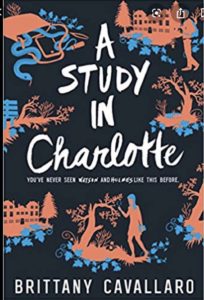
|
In Brittany Cavallaro’s A Study in Charlotte (Katherine Tegen Books, 2016), teenaged Charlotte Holmes and Jamie Watson – descendants of the original Holmes and Watson – meet at a Connecticut boarding school and promptly become embroiled in a murder. Several sequels. For ages 14 and up. |
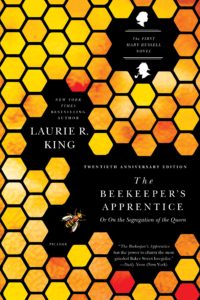
|
The heroine of Laurie R. King’s The Beekeeper’s Apprentice (Picador, 2007), set in 1915, is orphaned teenage heiress Mary Russell, bright, gawky, and unhappily living with her guardian, a nasty aunt. Then, out for a walk, she meets the elderly Sherlock Holmes, now retired and devoting himself to the study of bees. Impressed by Mary’s sharp wits, he decides to tutor her in investigative techniques. In this, the first of a series, Mary and Holmes tackle a mystery that involves a kidnapping, a master criminal, and a threat to both their lives. For teens and adults. |
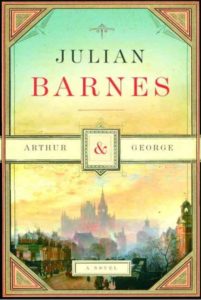 |
Julian Barnes’s superb Arthur & George (Vintage, 2007) is based on a true story, in which Arthur – that is, Arthur Conan Doyle, creator of Sherlock Holmes – comes to the defense of George Edalji, a half-Indian British solicitor, wrongly convicted of a crime in a case clearly decided by racial prejudice. For teens and adults. |
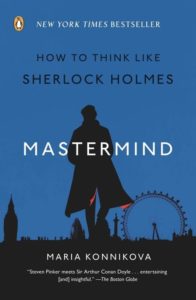
|
Psychologist Maria Konnikova’s Mastermind: How to Think Like Sherlock Holmes (Viking, 2013) analyzes Holmes’s methods, with insights from neuroscience and psychology, and many telling Sherlockian anecdotes. For teens and adults. |
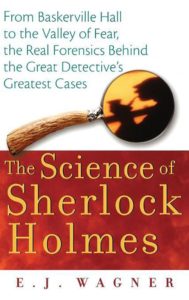
|
E.J. Wagner’s The Science of Sherlock Holmes (Wiley, 2007) uses the Sherlock Holmes stories as jumping-off points for a fascinating history of forensics. Chapter titles include “Dialogue with the Dead,” “Beastly Tales and Black Dogs,” and “Disguise and the Detective.” An absorbing read for teens and adults. |
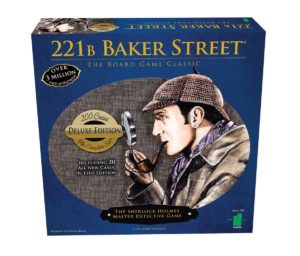
|
In 221B Baker Street – a wonderful board game for would-be detectives – players solve 20 different Holmesian mysteries. The board is a map of Victorian London, which players navigate while collecting clues. For 2-6 players, ages 10 and up. |
